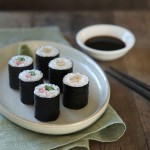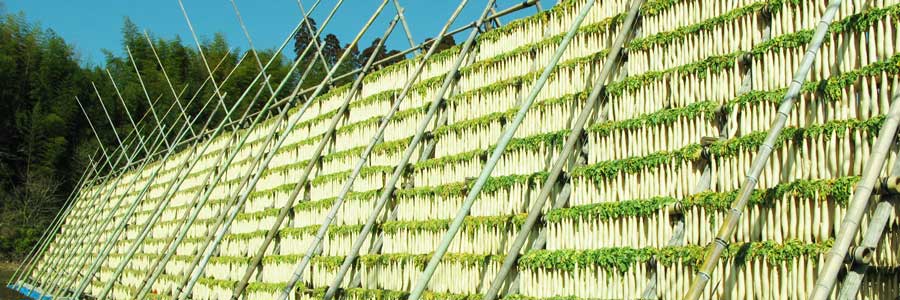
Pickled foods or tsukemono are an integral part of the Japanese diet. Originally developed out of necessity as way to preserve food before the advent of refrigeration, Japanese pickles now exist in wide variety of forms, with many regional specialties boasting their own unique and subtle variations in flavor.
Mitoku works with producers that create naturally delicious pickles according to the time-honored methods of one-form pickling that have been developed over centuries. Our products are made using a wide variety of pickling techniques and media, including bran, salt, vinegar, miso, shoyu, and the residue from sake production, but common to all our traditional pickles is the absence of refined sugar, commercial salt, synthetic vinegar or soy sauce, and preservatives.
-
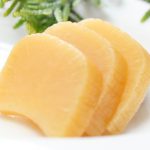
Japanese Takuan
Takuan, meaning daikon (Japanese radish) pickled in rice bran and salt, is one of the most important and popular Japanese tsukemono. Our takuan is made using simple, traditional methods with no artificial additives, coloring, preservatives, or sugar. This flavorsome pickle has a satisfying, crunchy texture and works great as a tasty snack or as a side dish served with rice.
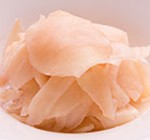
Organic Sushi Ginger
Japanese pickled ginger or gari has become widely known overseas thanks to its role as a palette cleanser for sushi. Mitoku’s sushi ginger is made with ultra-thin ginger slices, pickled in brown rice vinegar, with a touch of sea salt and red shiso leaf added for flavor and color. The delicate slicing allows the vinegar to penetrate the ginger more thoroughly, improving flavor and texture. This ready-to-eat sushi ginger has a refreshing, zesty tang that tickles the taste buds and enhances the overall dining experience.
Creating the right environment for fermentation
The traditional pickling process used in Japan is technically known as “lactic acid fermentation”, one of nature’s oldest and safest ways of preserving food. The key to good pickling is the early establishment of lactic acid-forming bacteria before other bacteria have a chance to multiply. The latter, which can spoil pickling vegetables, cannot tolerate the high acidity produced by lactic acid bacteria or the high salt concentration used in most pickling methods. To help establish beneficial bacteria, traditional makers must use plenty of well-mixed salt and store developing pickles in a cool place (4-18 °C is ideal).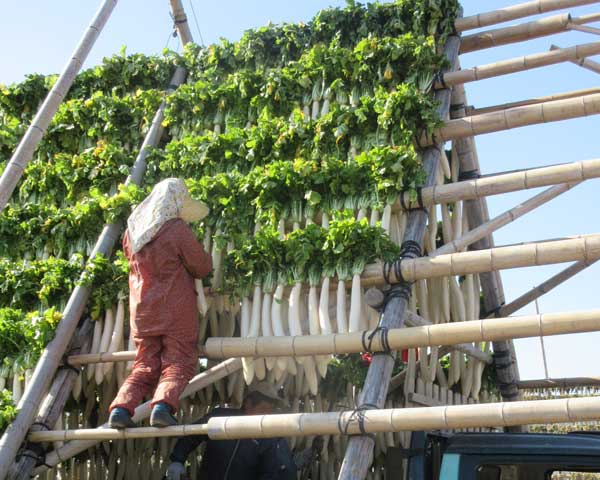
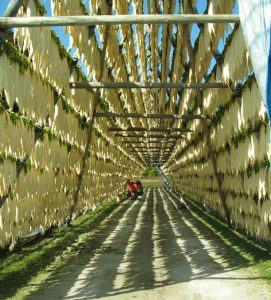
Although roots such as ginger, carrots, and Japanese radish (daikon) are the most commonly used vegetables in Japanese pickling, other vegetables such as cucumber, burdock, eggplant, and even flowers are sometimes used. The key to making crisp, flavorful pickles, such as Mitoku’s Takuan and Sushi Ginger, is using fresh, clean vegetables, adding just enough high-quality salt, and creating a highly acidic pickling medium before the vegetables start to spoil.
How our daikon are grown
The daikon used in Mitoku’s takuan are produced in Miyazaki Prefecture, on the southern island of Kyushu, in a little village that just happens to be Japan’s no.1 producer of dried daikon. Various factors combine to make this area well suited to daikon cultivation. Firstly, the surrounding area is about 70% woodland. Secondly, in winter the temperature drops dramatically and the area is hit by dry winds. Both of these factors are said to be good for the crop. In addition, low rainfall means that temperature rarely reaches freezing point, sparing the daikon from frost damage. Furthermore, the soil in this area is high in volcanic ash with good water retention. This, it is said, results in fast-growing daikon with good elasticity and thin skins.
Drying takes place in the cold winter months after the daikon are harvested. The daikon are suspended in rows on large triangular wooden frames called yagura and left to dry outdoors in the sun. These frames, which are about 5m high and 80m long, with the center wide enough to drive a car through, are erected without nails using just rope and bamboo. The great rows of daikon hanging suspended in the winter sun are quite a sight to behold! In the event of rainfall, the local farmers rush outside to cover the yagura with tarpaulin and protect the precious crops. This drying method is labor intensive and requires constant vigilance, but also results in a finished product with markedly superior flavor.
Sushi ginger is so named because it is almost always served with sushi or sashimi (slices of raw fish served without rice) as a palette cleanser. If you have ever been to a sushi bar, you have no doubt seen mounds of these paper-thin, pink, or beige pickles.
Pickled ginger is not limited to sushi however. It also makes for an excellent digestive aid, condiment to use with whole meals, or snack that can be served all-year-round. Cut into slivers, it is a great addition to tossed or pasta salads (see Pasta and Bean Salad with Pickled Ginger), fried rice or noodles, and stir-fries. Straight from the pack, this versatile delicacy is also the perfect complement for tempura and other fried foods.
Mitoku offers three other delicious varieties of sushi pickle: Sushi Cucumber, Sushi Daikon, and Sushi Garlic.
Related Recipes



